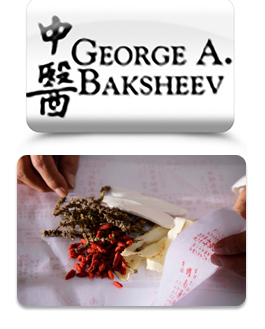Herbs play the major part in the cure of illnesses.
Herbal medicine dates back several thousand years. The first book on the topic was published in 100 AD titled 'The Nei Ching’ or ‘Internal Medicine’. Today, revised editions of this text includes the chemical properties of all the herbs mentioned.
There are at least 6,000 herbs used in China today, many of which grow in other countries.
The discipline of Chinese Herbalism involves learning every facet of their administration for any illness of man. From how and when to prepare each herb; the specialised ways of collecting them; their properties; characters; uses; medicinal qualities; side effects; contra indication for use; in which manner they combine with foodstuffs and other herbs, and how they affect a person’s chi flow.
A brief summary of the extent to which this study goes follows:-- For collecting Herbs the student must collect only in the Spring season when it is warm for flowers of plants.
- In Summer when it is hot, collect the leaves.
- In Autumn when it is dry and cooler, collect seeds, fruit and branches.
- In Winter roots are collected.
An example of the Classification of a Herb:-
Dandelion (Taraxacum Officinale) — Pu Kung Ying is a common plant which most people know as a weed with yellow flowers. However the different parts of the plant are very useful herbs. In China, the herb is collected in early Summer and the chemical analysis and character of the varieties of the plant are made.
The plant is cleaned and dried after it is collected. The chemical analyses of the plants have been made:— Tara — choline, mum, pectin, Taraxacum Officinale contains taraxol, taraxerol and 1 3-amyrin. It also contains glucose sugars and others. The leaves contain lutein, violaxanthin, Vitamin C, 50-100 mg Vitamin B. The flower contains anidiol (and in leaves) 5 alpha stigmast -7-en-i 3-ol) also folic acid and Victamin C.
Traditionally, the use has been determined according to its taste, which is Kan (sweet), Ku (bitter) and it has Han (cold) character. The herb is mentioned in the ancient Pen Tsao book saying it is not poisonous. The meridians it treats are stomach and liver, It was used for gallstones and snake bites in the old days. Quantity: 0.3-1 liang.
Indication for use -
Mastitis and chronic mastitis, abcess, lymph nodes, inflammation, hepatitis, gall bladder stone, chronic stomach ulcer, indigestion. Today we find the use of the herb as a liquid injected into the body as in western medical approach.
Call today for more information or book your appointment!
